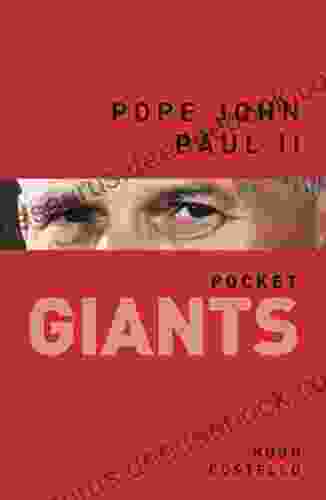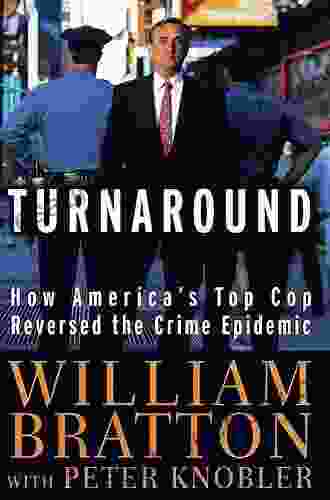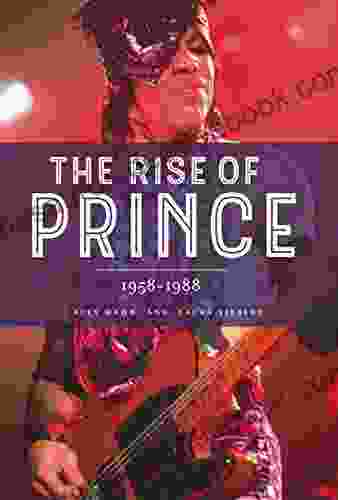How America's Top Cop Reversed the Crime Epidemic: A Comprehensive Examination

In the 1980s and early 1990s, America faced a severe crime epidemic. Violent crime rates soared, reaching unprecedented levels. Fear permeated communities, and citizens felt unsafe in their own neighborhoods. In response, police departments across the country struggled to find effective strategies to combat the rising tide of crime.
4.5 out of 5
| Language | : | English |
| File size | : | 1150 KB |
| Text-to-Speech | : | Enabled |
| Screen Reader | : | Supported |
| Enhanced typesetting | : | Enabled |
| Word Wise | : | Enabled |
| Print length | : | 368 pages |
However, in the mid-1990s, a new era of crime fighting began under the leadership of William Bratton. As police commissioner of the New York City Police Department (NYPD) and later as chief of the Los Angeles Police Department (LAPD),Bratton implemented a series of innovative policing strategies that dramatically reduced crime rates in both cities. His approach, which focused on data-driven policing, community engagement, and technology, became a model for law enforcement agencies across the country.
In this article, we will explore the strategies and initiatives spearheaded by Bratton that led to this significant decline in crime rates. We will examine the factors that contributed to their success and discuss their implications for crime prevention and law enforcement practices.
Broken Windows Theory and CompStat
One of the cornerstones of Bratton's policing strategy was the "broken windows" theory, which posits that even minor signs of disorder, such as broken windows or graffiti, can create an environment that encourages more serious crimes. Bratton believed that by cracking down on these minor offenses, police could prevent more serious crimes from occurring.
To implement this theory, Bratton instituted a new crime-tracking system called CompStat (Computerized Statistics). CompStat allowed police commanders to track crime data in real-time, identify crime hot spots, and allocate resources accordingly. By focusing on these high-crime areas, police were able to prevent crimes before they occurred.
Community Policing
Another key element of Bratton's approach was community policing. Bratton believed that building strong relationships between police officers and the communities they served was essential for effective crime prevention. He encouraged officers to get out of their cars and interact with residents, build trust, and address community concerns.
Bratton also implemented a number of community-oriented policing programs, such as neighborhood watch groups and community policing councils. These programs allowed residents to play a more active role in their own safety and helped to create a sense of ownership and responsibility within communities.
Technology in Policing
Bratton was also an early adopter of technology in policing. He believed that technology could be used to improve crime prevention and investigation efforts. Under his leadership, the NYPD and LAPD invested heavily in new technologies, such as gunshot detection systems, surveillance cameras, and crime-mapping software.
These technologies allowed police to respond more quickly to crimes, identify suspects, and prevent future crimes from occurring. They also helped to improve the overall efficiency and effectiveness of police operations.
Factors Contributing to Success
There were a number of factors that contributed to the success of Bratton's crime-fighting strategies. First, Bratton had the support of strong political leadership. Both Mayor Rudolph Giuliani in New York City and Mayor Richard Riordan in Los Angeles gave Bratton the authority and resources he needed to implement his reforms.
Second, Bratton was able to attract and retain a team of talented and dedicated law enforcement professionals. He created a culture of excellence within the NYPD and LAPD, and he rewarded officers for their successes.
Third, Bratton was willing to take risks and try new things. He was not afraid to experiment with new policing strategies and technologies, and he was constantly looking for ways to improve the effectiveness of his department.
Finally, Bratton had a clear vision for the future of policing. He believed that police departments should be focused on preventing crime, not just reacting to it. He also believed that police officers should be seen as guardians of the community, not as adversaries.
Implications for Crime Prevention and Law Enforcement Practices
Bratton's success in reducing crime rates has had a profound impact on crime prevention and law enforcement practices across the country. His strategies have been adopted by police departments in cities large and small, and they have been credited with helping to reduce crime rates in communities across the United States.
Bratton's approach has also helped to redefine the role of police in society. Police officers are no longer seen as simply crime fighters; they are also seen as community partners and problem solvers. This shift has helped to improve relationships between police and the communities they serve, and it has made communities safer and more livable.
William Bratton's innovative policing strategies helped to reverse the crime epidemic that plagued America in the 1980s and early 1990s. His focus on data-driven policing, community engagement, and technology transformed the NYPD and LAPD into models for law enforcement agencies across the country.
Bratton's legacy is one of innovation, leadership, and success. His strategies have helped to make America's cities safer and more livable, and they continue to inspire police departments around the world.
4.5 out of 5
| Language | : | English |
| File size | : | 1150 KB |
| Text-to-Speech | : | Enabled |
| Screen Reader | : | Supported |
| Enhanced typesetting | : | Enabled |
| Word Wise | : | Enabled |
| Print length | : | 368 pages |
Do you want to contribute by writing guest posts on this blog?
Please contact us and send us a resume of previous articles that you have written.
 Book
Book Novel
Novel Page
Page Text
Text Story
Story Library
Library Paperback
Paperback E-book
E-book Magazine
Magazine Paragraph
Paragraph Sentence
Sentence Glossary
Glossary Foreword
Foreword Synopsis
Synopsis Footnote
Footnote Codex
Codex Tome
Tome Biography
Biography Autobiography
Autobiography Dictionary
Dictionary Thesaurus
Thesaurus Narrator
Narrator Librarian
Librarian Catalog
Catalog Card Catalog
Card Catalog Borrowing
Borrowing Periodicals
Periodicals Study
Study Scholarly
Scholarly Lending
Lending Reserve
Reserve Academic
Academic Reading Room
Reading Room Special Collections
Special Collections Literacy
Literacy Thesis
Thesis Dissertation
Dissertation Awards
Awards Book Club
Book Club Theory
Theory David Litt
David Litt Stephanie Kay
Stephanie Kay Lawrence Weschler
Lawrence Weschler Jennifer Acker
Jennifer Acker Mariana Caviglia
Mariana Caviglia Kat T Masen
Kat T Masen Scott La Counte
Scott La Counte Theodore Brun
Theodore Brun J Paul Dittmann
J Paul Dittmann Genevieve Stebbins
Genevieve Stebbins Jackie French
Jackie French James C Kearney
James C Kearney Vijay Mahajan
Vijay Mahajan Mario Perazzelli
Mario Perazzelli Ronald Levinson
Ronald Levinson David Boe
David Boe Morgan Richard Olivier
Morgan Richard Olivier Eric Morris
Eric Morris Jonathan Ames
Jonathan Ames Dhara Shah
Dhara Shah
Light bulbAdvertise smarter! Our strategic ad space ensures maximum exposure. Reserve your spot today!

 Julio CortázarMercedes-Benz 300 and 300S: The Epitome of Luxury and Performance in the...
Julio CortázarMercedes-Benz 300 and 300S: The Epitome of Luxury and Performance in the... Hector BlairFollow ·13k
Hector BlairFollow ·13k Deion SimmonsFollow ·13.7k
Deion SimmonsFollow ·13.7k Troy SimmonsFollow ·12.3k
Troy SimmonsFollow ·12.3k Rex HayesFollow ·12.1k
Rex HayesFollow ·12.1k Corey HayesFollow ·2.7k
Corey HayesFollow ·2.7k Vic ParkerFollow ·4.4k
Vic ParkerFollow ·4.4k Fred FosterFollow ·8.6k
Fred FosterFollow ·8.6k Jorge AmadoFollow ·17.5k
Jorge AmadoFollow ·17.5k

 Gary Reed
Gary ReedWeb to Web for Beginners: A Comprehensive Guide to...
In today's interconnected world, websites...

 Elliott Carter
Elliott CarterThe Moon Is Down: John Steinbeck's Poignant Portrait of...
In the annals of literature, John...

 Dalton Foster
Dalton FosterMark The Mechanic: The Incredible Story Of A Young...
In the vibrant realm of robotics, where...

 Fred Foster
Fred FosteriPhone 13 Pro Max User Guide: Everything You Need to Know
The iPhone 13 Pro Max...

 Rodney Parker
Rodney ParkerPope John Paul II: The Pocket Giant Who Inspired Millions
Pope John Paul II, or...
4.5 out of 5
| Language | : | English |
| File size | : | 1150 KB |
| Text-to-Speech | : | Enabled |
| Screen Reader | : | Supported |
| Enhanced typesetting | : | Enabled |
| Word Wise | : | Enabled |
| Print length | : | 368 pages |












